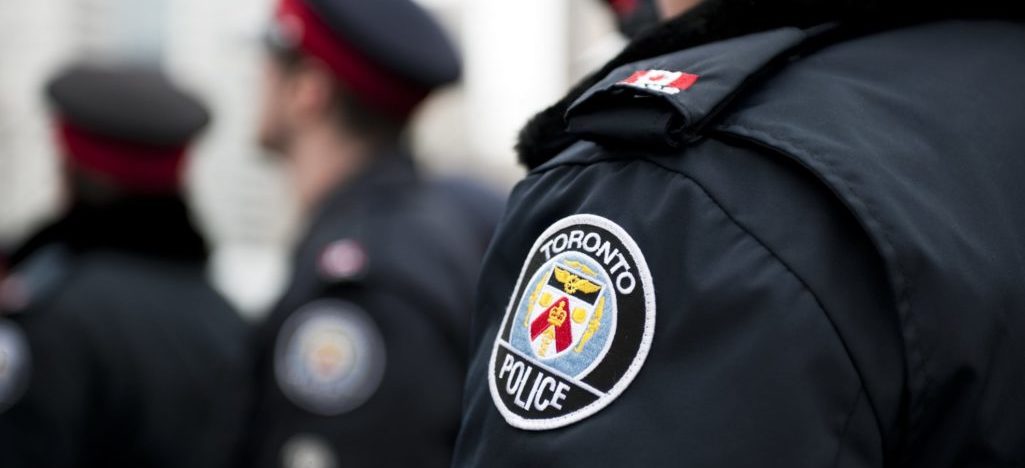Introduction
Police use-of-force has been the subject of increased public scrutiny in Canada with many calling into question the adequacy of the processes in place to address and remedy police misconduct.
In the case of Clark v. Ontario (Attorney General), 2019 ONCA 311, Toronto Police detectives Jamie Clark, Donald Belanger and Steven Watts drew attention to a blind spot that appears to exist in the Canadian legal system regarding the reputational and professional interests of police officers accused of misconduct during Charter applications in criminal proceedings. Unlike in administrative or civil proceedings, which have statutory and procedural fairness requirements that protect the interests of a police officers until a determination on the merits is reached, in criminal proceedings police officers have no independent right to defend allegations of abuse levelled against them by an accused as part of a defence. Nevertheless, the courts are entitled to make findings of fact about police conduct based solely on an accused’s testimony and they have broad discretion to fashion remedies where they have determined trial fairness has been threatened or that the administration of justice was undermined by a state actor.
Background Facts
On June 11, 2009, detectives Clark, Belanger and Watts arrested and charged Randy Maharaj and Neil Singh with armed robbery with a firearm and forcible confinement after they stole approximately $350,000.00 worth of copper piping from a plumbing and supply company. During the robbery, Mr. Maharaj bound a company employee with zip ties and duct tape and threatened him with a handgun while Mr. Singh, who worked at the company, loaded the copper piping into a vehicle. Mr. Maharaj confessed to both his and Mr. Singh’s involvement in the robbery in a video-statement taken after his arrest.
During the preliminary hearing, Mr. Maharaj alleged for the first time he had been kicked in the head and beaten by the detectives after his arrest. His counsel produced x-rays indicating he had a serious rib injury. The detectives each denied the allegations. After the hearing, the Crown consulted with a doctor who opined Mr. Maharaj would have suffered excruciating pain as a result of the injury; however, there were no indications in any of Mr. Maharaj’s medical records he had complained of rib pain, including at the detention centre where he was incarcerated immediately after his arrest. The Crown did not ask the doctor to review the video of the confession to consider whether Mr. Maharaj’s arm movements in the video were consistent with the injuries alleged. Nor did she consult with the detention centre to determine whether he had complained about a rib injury after his arrest or before the hearing. On the eve of the trial, the Crown stayed the charges against Mr. Maharaj because the confession would likely be ruled inadmissible on a Charter application.
Mr. Singh’s trial proceeded by jury in November 2011. At trial, he brought an application to stay the proceedings on the basis that he too had been assaulted by the detectives. The police officers were not called to testify and the Crown did not call any other evidence to challenge the allegations. The trial judge dismissed the stay application but, after Mr. Singh was convicted, she reduced his sentence in light of the uncontested evidence of assault (R v. Singh, 2012 ONSC 4429 rev’d 2013 ONCA 750). In her reasons for dismissing the stay, she described the detectives’ alleged behaviour as “police brutality” and “reprehensible” conduct by the state (at para 49). Her decision was widely discussed in mainstream media and on the internet as well as among Crown counsel and members of the judiciary.
The Initial Misconduct Investigations
Ontario’s Special Investigations Unit (“SIU”), which has a statutory mandate to conduct independent investigations to determine if a police officer has committed a criminal offence in the course of his or her duty, was notified about the allegations and initiated an investigation. When Mr. Maharaj declined to participate in the investigation, the SIU revoked its mandate.
Subsequently, the Toronto Police Service Professional Standards Unit (the “TPS Unit”) investigated the allegations and concluded they could not be substantiated on the evidence.
The Appeal
After the TPS Unit’s investigation, Mr. Singh appealed his conviction and sentence. Prior to the hearing, one of the detectives met with the Crown conducting the appeal to discuss concerns he had about the lack of evidence adduced during the Charter application to refute the allegations against him. The Crown did not bring a fresh evidence motion on appeal nor did she otherwise draw the court’s attention to the detectives’ concern about the accuracy of Mr. Maharaj and Mr. Singh’s version of events.
In the result, the Ontario Court of Appeal set aside Mr. Singh’s conviction and entered a stay of proceedings, noting the evidence concerning the assaults was not contested at trial and that none of the detectives had testified about the allegations. The Court accepted the accused’s version of events as “the factual framework for what actually happened” (at para 11) and, on that basis, found the detectives had administered a “calculated, prolonged and skillfully choreographed investigative technique” to secure evidence (at para 43). The Court condemned the alleged assaults as egregious, systematic breaches of constitutional rights.
The Subsequent Misconduct Investigations
After Mr. Singh’s appeal, SIU re-opened its investigation, interviewed Mr. Maharaj and reviewed all his records. SIU concluded Mr. Maharaj’s rib injury post-dated the arrest and that the allegations of misconduct were not substantiated by the evidence.
In May 2014, the Toronto Police Chief asked the Ontario Provincial Police (“OPP”) to conduct an independent review of the TPS Unit’s investigation and to reach an independent conclusion regarding the allegations. The OPP concluded that the TPS Unit’s investigation was thorough and there was no reason to refute that the allegations could not be substantiated on the evidence.
Civil Proceedings against the Crown
On June 22, 2016, the detectives commenced an action for damages in negligence and misfeasance in public office against the Attorney General of Ontario. They alleged the Crown had failed to adequately investigate the assault allegations and, in particular, had failed to call them as witnesses to refute the allegations. The Attorney General was successful in striking the detectives claim in negligence on the basis that the principles of Crown immunity protect Crown prosecutors from liability except in cases of malicious prosecution and wrongful non-disclosure. The motions judge refused to strike the misfeasance in public office claim because it was not plain and obvious to him the claim was bound to fail. The parties appealed to the Ontario Court of Appeal.
The Court of Appeal upheld the motion judge’s ruling regarding the negligence claim and reiterated the important policy considerations that animate Crown immunity as most recently discussed by the Supreme Court of Canada in Henry v. British Columbia (Attorney General), 2015 SCC 24, including:
- appropriate thresholds for liability must ensure that Crown attorneys are not diverted from their important public duties by having to defend against “disgruntled police officers” (Clark at paras 86); and
- the need to avoid defensive lawyering that would distort principled decision-making by Crown attorneys (Clark at para 87).
Crown immunity exists because Crown attorneys are tasked with initiating, continuing and terminating prosecutions based solely on whether there is a reasonable prospect of conviction and whether the prosecution is in the public interest — exposing the Crown to negligence claims by the police would distort these twin duties and unnecessarily lengthen proceedings (at para 88). That means incompetence, inexperience, poor judgment, lack of professionalism, laziness, recklessness, honest mistake, negligence or even gross negligence cannot form the basis of a claim against the Crown (Clark at para 82).
At the end of the day, the only recourse the detectives may have against the Crown in this case is their claim for misfeasance in public office. In that respect, the Court of Appeal upheld the motions judge’s decision that it was not plain and obvious the claim was bound to fail because to establish liability, the detectives must show deliberate abuse of authority by the Crown, which meets the very high liability threshold discussed in Henry.
To establish misfeasance in public office, a plaintiff must demonstrate that a public officer has acted with knowledge both that (s)he has no power to do the act complained of and that the act is likely to injury the plaintiff (Odhaviji Estate v. Woodhouse, 2003 SCC 69, at para 22). In other words, a plaintiff must show the public officer demonstrated deliberate disregard of official duty coupled with knowledge that the misconduct was likely to injure the plaintiff (i.e. bad faith or dishonesty) or, more simply, that the public officer deliberately engaged in conduct that he or she knows to be inconsistent with the obligations of the office (Odhavji, at paras 23 & 28). The presence of bad faith and improper motive is crucial to a successful misfeasance in public office claim.
The Ontario Court of Appeal’s decision concerning misfeasance in public office is the first appellate decision in Canada that permits a misfeasance claim against Crown prosecutors by parties other than the subject of a prosecution and as such, the Attorney General has been granted leave to appeal the decision at the Supreme Court of Canada. The appeal will be heard on October 15, 2020.
Conclusion
The Ontario Court of Appeal’s decision in Clark raises important questions about whether procedural safeguards are necessary to ensure the interests of police officers are appropriately balanced against the need to ensure trial fairness for an accused during a Charter application. While there are very good policy reasons for protecting the Crown’s duty to act in the public interest, as well as an accused’s right to be free from abusive or coercive state conduct, the interests of police officers should not be overlooked in cases where the seriousness of the allegations levelled against them have the potential to cause significant reputational and professional consequences.













